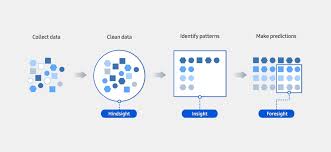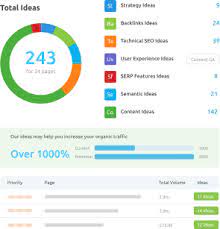Understanding Predictive Data Analytics
Predictive data analytics is a powerful tool that uses historical data, machine learning, and statistical algorithms to forecast future outcomes. This technology is transforming industries by providing insights that help businesses make informed decisions and stay ahead of the competition.
What is Predictive Data Analytics?
At its core, predictive data analytics involves analysing past data to identify patterns and trends that can predict future events. By leveraging machine learning models and sophisticated algorithms, organisations can anticipate customer behaviour, market trends, and potential risks.
How Does It Work?
The process begins with data collection from various sources such as transactional databases, sensors, or social media platforms. This data is then cleaned and processed to ensure accuracy. Next, predictive models are developed using techniques like regression analysis, decision trees, or neural networks. These models are trained on historical data to recognise patterns and make predictions about future events.
Applications Across Industries
Predictive analytics has a wide range of applications across different sectors:
- Retail: Retailers use predictive analytics to forecast demand for products, optimise inventory levels, and personalise marketing strategies based on consumer behaviour.
- Healthcare: In healthcare, predictive models help in early diagnosis of diseases, predicting patient admissions, and managing hospital resources efficiently.
- Finance: Financial institutions employ predictive analytics for credit scoring, fraud detection, and investment risk management.
- Manufacturing: Manufacturers utilise this technology to predict equipment failures before they occur, thereby reducing downtime and maintenance costs.
The Benefits of Predictive Analytics
The advantages of implementing predictive analytics in business operations are significant:
- Improved Decision-Making: By providing actionable insights based on data-driven predictions, organisations can make more informed strategic decisions.
- Increased Efficiency: Predictive analytics helps streamline operations by anticipating demand fluctuations or identifying inefficiencies in processes.
- Custoмer Satisfaction: Businesses can enhance customer experiences through personalised services tailored to individual preferences predicted by the models.
- Cоst Savings: By predicting potential issues before they arise—such as equipment failures—companies can avoid costly disruptions.
The Challenges Ahead
Despite its benefits, implementing predictive analytics does present challenges. Ensuring data quality is paramount as inaccurate inputs lead to unreliable predictions. Additionally, developing effective models requires skilled personnel who understand both the technical aspects of machine learning algorithms and the specific needs of their industry.
The Future of Predictive Data Analytics
The future looks promising for predictive analytics as advancements in AI continue to enhance model accuracy and computational power grows exponentially. As more businesses recognise the value of harnessing their data’s potential through prediction tools like these—coupled with improved accessibility—the adoption rate will likely increase across all sectors globally.
Pioneering companies already leveraging this technology are reaping considerable rewards; those yet hesitating may find themselves left behind if they do not embrace this transformative approach soon enough within their strategic planning processes moving forward into tomorrow’s markets today!
Nine Advantages of Predictive Data Analytics: Empowering Strategic Decision-Making and Innovation
- Enhances decision-making by providing data-driven insights
- Improves operational efficiency through predictive forecasting
- Enables proactive risk management by identifying potential threats in advance
- Facilitates personalised customer experiences based on predictive analysis
- Optimises resource allocation and inventory management for cost savings
- Predicts market trends and customer behaviour for strategic planning
- Supports early detection of issues, such as equipment failures or fraud
- Drives innovation and competitive advantage in various industries
- Empowers businesses to stay ahead of the curve with forward-looking insights
Challenges of Predictive Data Analytics: Privacy, Bias, Complexity, Reliance, Security, and Accuracy
- Data Privacy Concerns
- Bias in Data
- Complex Implementation
- Over-Reliance on Models
- Data Security Risks
- Model Accuracy Challenges
Enhances decision-making by providing data-driven insights
Predictive data analytics offers a significant advantage by enhancing decision-making through the provision of data-driven insights. By analysing historical data and identifying patterns, businesses can make informed decisions based on accurate predictions rather than relying solely on intuition or past experiences. This proactive approach enables organisations to anticipate trends, mitigate risks, and seize opportunities with greater confidence, ultimately leading to more successful outcomes and competitive advantages in today’s dynamic business landscape.
Improves operational efficiency through predictive forecasting
Predictive data analytics offers a significant advantage by enhancing operational efficiency through predictive forecasting. By analysing historical data and identifying patterns, businesses can anticipate future trends and make proactive decisions to optimise their operations. This capability enables organisations to streamline processes, allocate resources more effectively, and reduce unnecessary costs. With the ability to forecast demand, identify potential issues before they arise, and plan ahead based on reliable predictions, businesses can operate more efficiently and stay agile in today’s competitive landscape.
Enables proactive risk management by identifying potential threats in advance
Predictive data analytics empowers organisations to proactively manage risks by identifying potential threats in advance. By analysing historical data and patterns, businesses can anticipate and mitigate risks before they escalate, ultimately enhancing their resilience and preparedness. This proactive approach not only minimises the impact of potential threats but also allows companies to implement preventive measures effectively, safeguarding their operations and reputation in an ever-evolving business landscape.
Facilitates personalised customer experiences based on predictive analysis
One of the key benefits of predictive data analytics is its ability to facilitate personalised customer experiences through predictive analysis. By analysing past data and predicting future behaviours, businesses can tailor their products and services to meet individual customer preferences and needs. This level of personalisation not only enhances customer satisfaction but also builds brand loyalty, ultimately leading to increased customer retention and long-term success for the business.
Optimises resource allocation and inventory management for cost savings
Predictive data analytics excels in optimising resource allocation and inventory management, leading to substantial cost savings for businesses. By analysing historical data and trends, organisations can accurately forecast demand, identify optimal inventory levels, and predict potential supply chain disruptions. This proactive approach enables companies to allocate resources efficiently, minimise excess inventory costs, and avoid stockouts. Ultimately, by leveraging predictive data analytics for resource allocation and inventory management, businesses can enhance operational efficiency and achieve significant cost savings that positively impact their bottom line.
Predicts market trends and customer behaviour for strategic planning
Predictive data analytics offers a significant advantage by accurately predicting market trends and customer behaviour, providing invaluable insights for strategic planning. By analysing historical data and identifying patterns, businesses can anticipate shifts in the market and understand consumer preferences before they occur. This proactive approach enables organisations to make informed decisions, tailor their strategies to meet customer needs effectively, and stay ahead of the competition. Armed with this foresight, companies can align their resources, marketing efforts, and product development initiatives to maximise opportunities and drive sustainable growth in a dynamic business landscape.
Supports early detection of issues, such as equipment failures or fraud
Predictive data analytics offers a crucial advantage by enabling early detection of issues, such as equipment failures or fraudulent activities. By analysing historical data and identifying patterns indicative of potential problems, businesses can take proactive measures to prevent costly breakdowns, minimise downtime, and safeguard against fraudulent behaviour. This proactive approach not only saves time and resources but also helps maintain operational efficiency and security, ultimately contributing to enhanced business performance and customer trust.
Drives innovation and competitive advantage in various industries
Predictive data analytics drives innovation and competitive advantage in various industries by empowering businesses to stay ahead of the curve. By leveraging historical data and advanced algorithms, organisations can uncover valuable insights that lead to the development of innovative products and services. This proactive approach enables companies to anticipate market trends, customer preferences, and potential risks, giving them a strategic edge over competitors. Through predictive analytics, businesses can make data-driven decisions that not only drive innovation but also enhance operational efficiency and customer satisfaction, ultimately positioning them as industry leaders in today’s dynamic marketplace.
Empowers businesses to stay ahead of the curve with forward-looking insights
Predictive data analytics empowers businesses to stay ahead of the curve by providing forward-looking insights that enable proactive decision-making. By analysing historical data and identifying patterns, trends, and potential outcomes, organisations can anticipate future challenges and opportunities. This proactive approach allows businesses to adapt swiftly to changing market conditions, mitigate risks before they escalate, and capitalise on emerging trends, giving them a competitive edge in today’s fast-paced business environment.
Data Privacy Concerns
Data Privacy Concerns: One significant con of predictive data analytics is the inherent risk to data privacy. To generate accurate predictions, these analytics rely on accessing extensive personal information, which can lead to concerns over privacy violations and the potential for data breaches. With the increasing volume of sensitive data being utilised for predictive purposes, there is a growing need for stringent measures to safeguard individuals’ privacy rights and ensure that data is handled ethically and securely.
Bias in Data
An inherent con of predictive data analytics is the issue of bias in data. The algorithms utilised in this technology have the potential to perpetuate and amplify biases that exist within historical datasets. This can result in unfair or discriminatory outcomes, as the predictions generated may reflect and reinforce existing prejudices present in the data. Addressing and mitigating bias in predictive analytics is crucial to ensure that decision-making processes are equitable and just, highlighting the importance of thorough examination and careful consideration when implementing such tools.
Complex Implementation
One significant drawback of predictive data analytics is the complex implementation process it entails. Setting up predictive analytics systems can be a challenging and resource-intensive task, demanding specialised skills and substantial financial investment. Organisations may face hurdles in acquiring the necessary expertise to develop and maintain these systems effectively. Additionally, the costs associated with implementing predictive analytics, such as acquiring advanced software tools and hiring skilled data scientists, can be prohibitive for some businesses, posing a barrier to entry for reaping the benefits of this valuable technology.
Over-Reliance on Models
An inherent con of predictive data analytics is the risk of over-reliance on models, which can lead to the oversight of qualitative factors and human intuition that are often essential for effective decision-making. While predictive models excel at processing vast amounts of data and identifying patterns, they may not fully capture the nuanced complexities or context that human judgement and experience can provide. Blindly following model predictions without considering qualitative insights may result in overlooking critical nuances and potential risks that could impact the accuracy and relevance of strategic decisions.
Data Security Risks
Data Security Risks are a significant con associated with predictive data analytics. Storing and analysing large datasets for predictive purposes can expose organisations to potential security breaches and cyber threats. As businesses accumulate vast amounts of sensitive information for analysis, they become prime targets for malicious actors seeking to exploit vulnerabilities in their systems. Ensuring robust data security measures is crucial to safeguarding confidential data and maintaining the trust of customers and stakeholders in an increasingly digital landscape.
Model Accuracy Challenges
One significant con of predictive data analytics is the challenge of model accuracy. Despite the advanced algorithms and techniques used, predictive models are not infallible and can yield inaccurate outcomes if the foundational assumptions or data quality are compromised. Inaccurate data inputs, biases in the training dataset, or oversimplified assumptions can all lead to unreliable predictions, potentially undermining the effectiveness of decision-making processes based on these models. Maintaining and ensuring data quality, as well as critically evaluating and refining model assumptions, are crucial steps in mitigating this inherent risk associated with predictive analytics.






